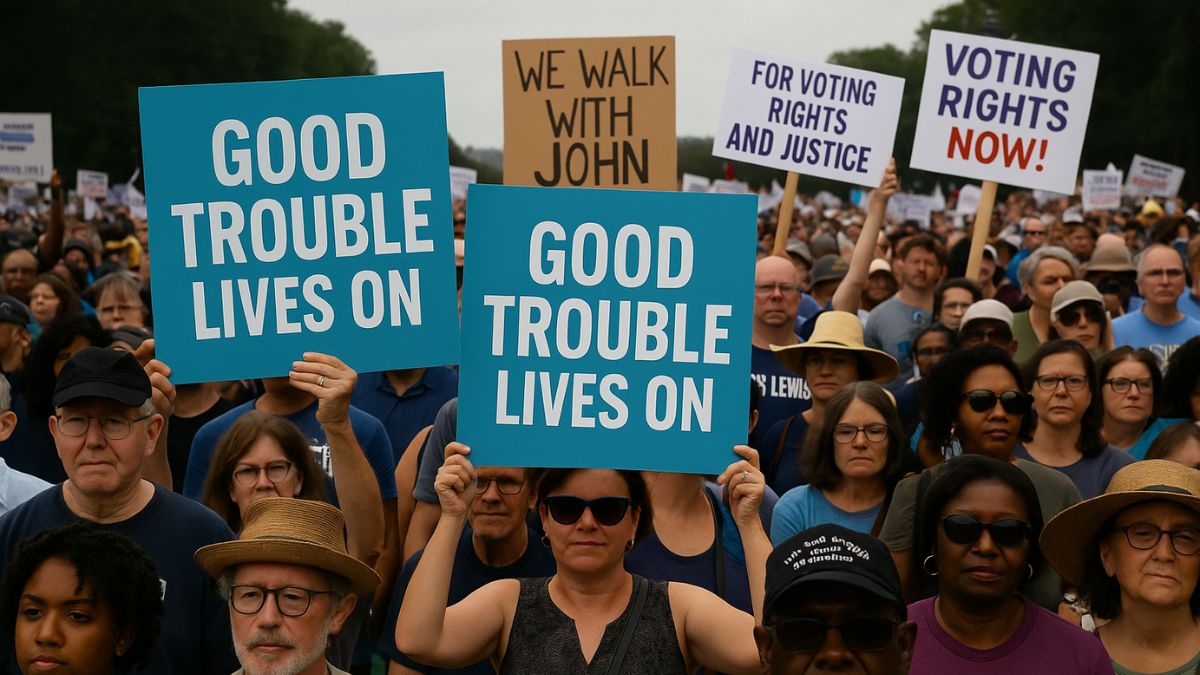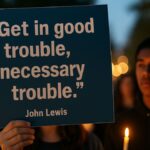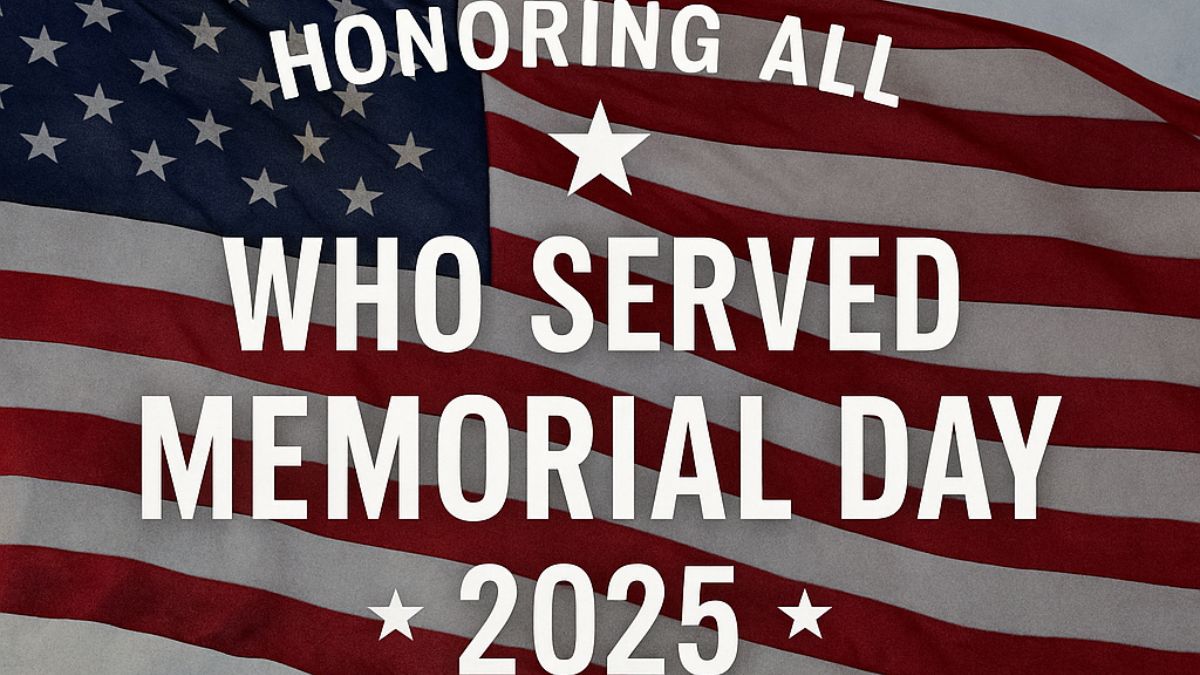New York: On July 17, 2025, Americans are taking to the streets once again — not just to resist, but to remember. In more than 1,500 cities and towns across the country, protesters are gathering under one banner: “Good Trouble Lives On.” This mass mobilization marks five years since the passing of Congressman John Lewis, the civil rights giant who preached “necessary trouble” in the face of injustice.
The day of action isn’t just a memorial — it’s a political flashpoint. Protesters are rallying against what they call a rollback of civil liberties under the Trump administration’s second term, from attacks on voting rights to suppression of dissent. With elections looming and tensions running high, the spirit of Lewis is being invoked not just in signs and slogans, but in footsteps on pavement.
Five years ago today, we lost my dear friend and colleague, John Lewis.
I was proud to serve with him and witness what it meant to get in good trouble. He spoke truth to power, fought for what’s right, and made this country better. His legacy lives on.#GoodTrouble pic.twitter.com/pGOTTC2gL3
— Rep. Bennie G. Thompson (@BennieGThompson) July 17, 2025
This article maps out where these protests are taking place — from Chicago to Chattanooga — and why the phrase “Good Trouble” still hits home in 2025. Whether you’re joining a march or watching from afar, here’s what you need to know about today’s coordinated uprising.
Where Are the “Good Trouble” Protests Happening?
On July 17 over 1,600 protests are expected nationwide in honor of the civil rights icon John Lewis. The “Good Trouble Lives On” rallies aim to challenge Trump policies and carry forward Lewis’ legacy of civil rights activism. pic.twitter.com/pAToQFgbHH
— USA TODAY Politics (@usatodayDC) July 16, 2025
More than 1,500 coordinated protests are being held today across all 50 U.S. states, making this one of the largest post-pandemic days of action in recent years. Here are the most significant ones:
Flagship Sites
- Chicago, IL – Major rally and teach-in with artists, organizers, and clergy
- Atlanta, GA – Voter registration drive + candlelight vigil near Lewis’ former district
- St. Louis, MO – Direct action training + courthouse march
- Annapolis, MD – Rally on steps of the Maryland State House
- Oakland, CA – Youth-led walkout and evening vigil
Key Protests Across Tennessee
- Memphis: Civil Rights Museum hosts a march and storytelling circle
- Knoxville: Protest at Howard H. Baker Jr. U.S. Courthouse
- Clarksville: Community bridge march and voter outreach
- Nashville (July 19): “The John Lewis Way March” to State Library & Archives
- Chattanooga: Gathering at 650 McCallie Ave
- Tullahoma, Jackson, Madisonville, Maryville: Local activist cookouts and speeches
Note: Many smaller towns are requiring RSVP to reveal exact locations for safety.
Why July 17 Still Matters
This date marks the fifth anniversary of John Lewis’ passing. He died on July 17, 2020, after a battle with pancreatic cancer — but his message lives on.
“Do not get lost in a sea of despair. Be hopeful, be optimistic… Make some noise and get in good trouble.” — John Lewis (2018)
Good Trouble Lives On Protests are set for July 17, to celebrate John Lewis.
Drop a 💙for Rep. Lewis & the protesters that will honor him. pic.twitter.com/7kpU33ellq
— DonkConnects ♻️™ (@donkoclock) July 10, 2025
For many, the protests feel like a living classroom. It’s not just about honoring the past — it’s about confronting the future.
Timeline: From Lewis’ Sit-Ins to Today’s Streets
| Year | Event |
| 1940 |
John Lewis born in Troy, Alabama
|
| 1960 |
Leads sit-ins in Nashville — first arrest
|
| 1965 |
Leads “Bloody Sunday” march in Selma
|
| 1986 |
Elected to U.S. Congress from Georgia
|
| 2011 |
Receives Medal of Freedom from President Obama
|
| 2020 |
Passes away at 80 years old
|
| 2025 |
1,500+ protests honor his legacy on July 17
|
What Protesters Are Demanding Today
Organizers have issued a list of demands, including:
- Restoration of the Voting Rights Act
- End to criminalization of peaceful protest
- Protection of Black, brown, immigrant, and LGBTQ+ communities
- Reversal of Trump administration cuts to Medicaid and SNAP
- Expanded access to voter registration and civic education
From Protest to Policy?
While today’s protests are highly visible, organizers say they’re just one piece of a larger puzzle — and a warning shot ahead of the 2026 midterms.
The coalition behind the protests has pledged monthly actions, much like their earlier “No Kings” campaign, which drew millions in June. Their goal? To create a rolling wave of resistance that keeps pressure on lawmakers and elevates new, young leaders — just like Lewis once was.







